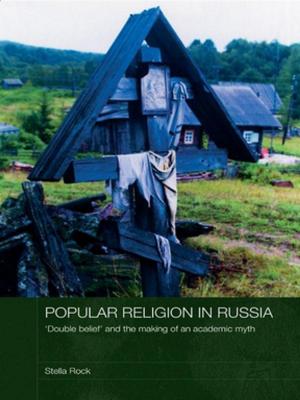| Author: | Christopher Walter | ISBN: | 9781351880510 |
| Publisher: | Taylor and Francis | Publication: | December 5, 2016 |
| Imprint: | Routledge | Language: | English |
| Author: | Christopher Walter |
| ISBN: | 9781351880510 |
| Publisher: | Taylor and Francis |
| Publication: | December 5, 2016 |
| Imprint: | Routledge |
| Language: | English |
Christopher Walter's study of the cult and iconography of Byzantine warrior saints - George, Demetrius, the two Theodores, and dozens more - is at once encyclopaedic and interpretative, and the first comprehensive study of the subject. The author delineates their origins and development as a distinctive category of saint, showing that in its definitive form this coincides with the apogee of the Byzantine empire in the 10th-11th centuries. He establishes a repertory, particularly of their commemorations in synaxaries and their representations in art, and describes their iconographical types and the functions ascribed to them once enrolled in the celestial army: support for the terrestrial army in its offensive campaigns, and a new protective role when the Byzantine Empire passed to the defensive. The survey highlights the lack of historicity among the Byzantines in their approach to the lives of these saints and their terrestrial careers. An epilogue briefly treats the analogous traditions in the cultures of neighbouring peoples. Walter draws attention to the development of an echelon of military saints, notably in church decoration, which provides the surest basis for defining their specificity; also to the way in which they were depicted, generally young, handsome and robust, and frequently 'twinned' in pairs, so calling attention to the importance of camaraderie among soldiers. At the same time, this work opens a new perspective on the military history of the Byzantine Empire. Its ideology of war consistently followed that of the Israelites; protected and favoured by divine intervention, there was no occasion to discuss the morality of a 'just war'. Consequently, when considering Byzantine methods of warfare, due attention should be given to the important role which they attributed to celestial help in their military campaigns.
Christopher Walter's study of the cult and iconography of Byzantine warrior saints - George, Demetrius, the two Theodores, and dozens more - is at once encyclopaedic and interpretative, and the first comprehensive study of the subject. The author delineates their origins and development as a distinctive category of saint, showing that in its definitive form this coincides with the apogee of the Byzantine empire in the 10th-11th centuries. He establishes a repertory, particularly of their commemorations in synaxaries and their representations in art, and describes their iconographical types and the functions ascribed to them once enrolled in the celestial army: support for the terrestrial army in its offensive campaigns, and a new protective role when the Byzantine Empire passed to the defensive. The survey highlights the lack of historicity among the Byzantines in their approach to the lives of these saints and their terrestrial careers. An epilogue briefly treats the analogous traditions in the cultures of neighbouring peoples. Walter draws attention to the development of an echelon of military saints, notably in church decoration, which provides the surest basis for defining their specificity; also to the way in which they were depicted, generally young, handsome and robust, and frequently 'twinned' in pairs, so calling attention to the importance of camaraderie among soldiers. At the same time, this work opens a new perspective on the military history of the Byzantine Empire. Its ideology of war consistently followed that of the Israelites; protected and favoured by divine intervention, there was no occasion to discuss the morality of a 'just war'. Consequently, when considering Byzantine methods of warfare, due attention should be given to the important role which they attributed to celestial help in their military campaigns.















